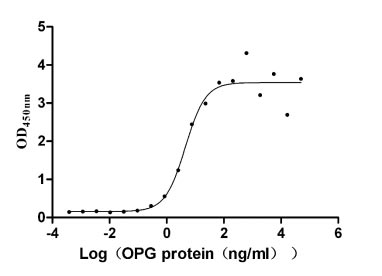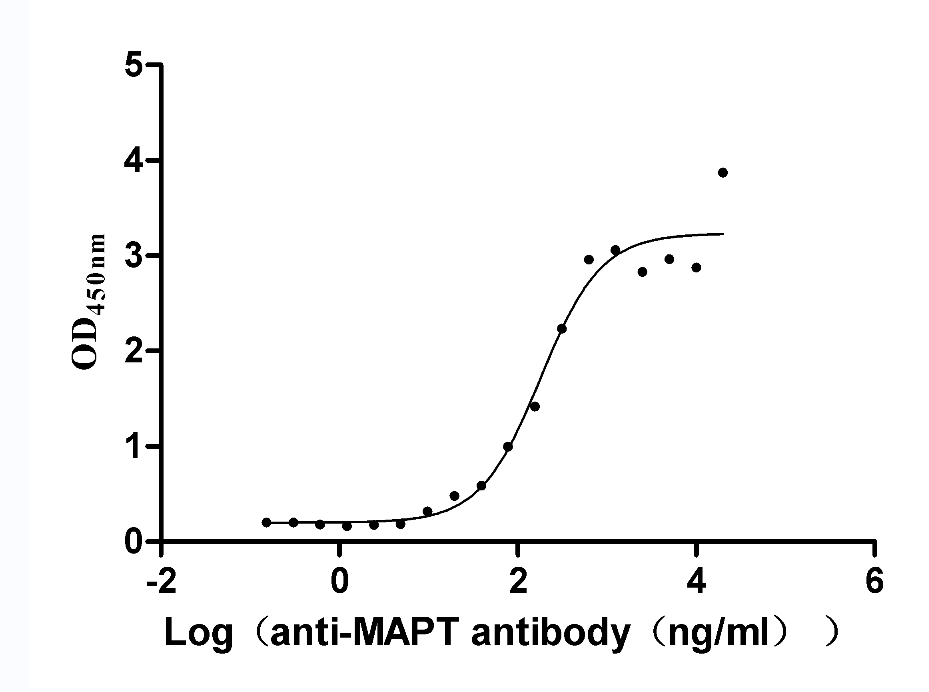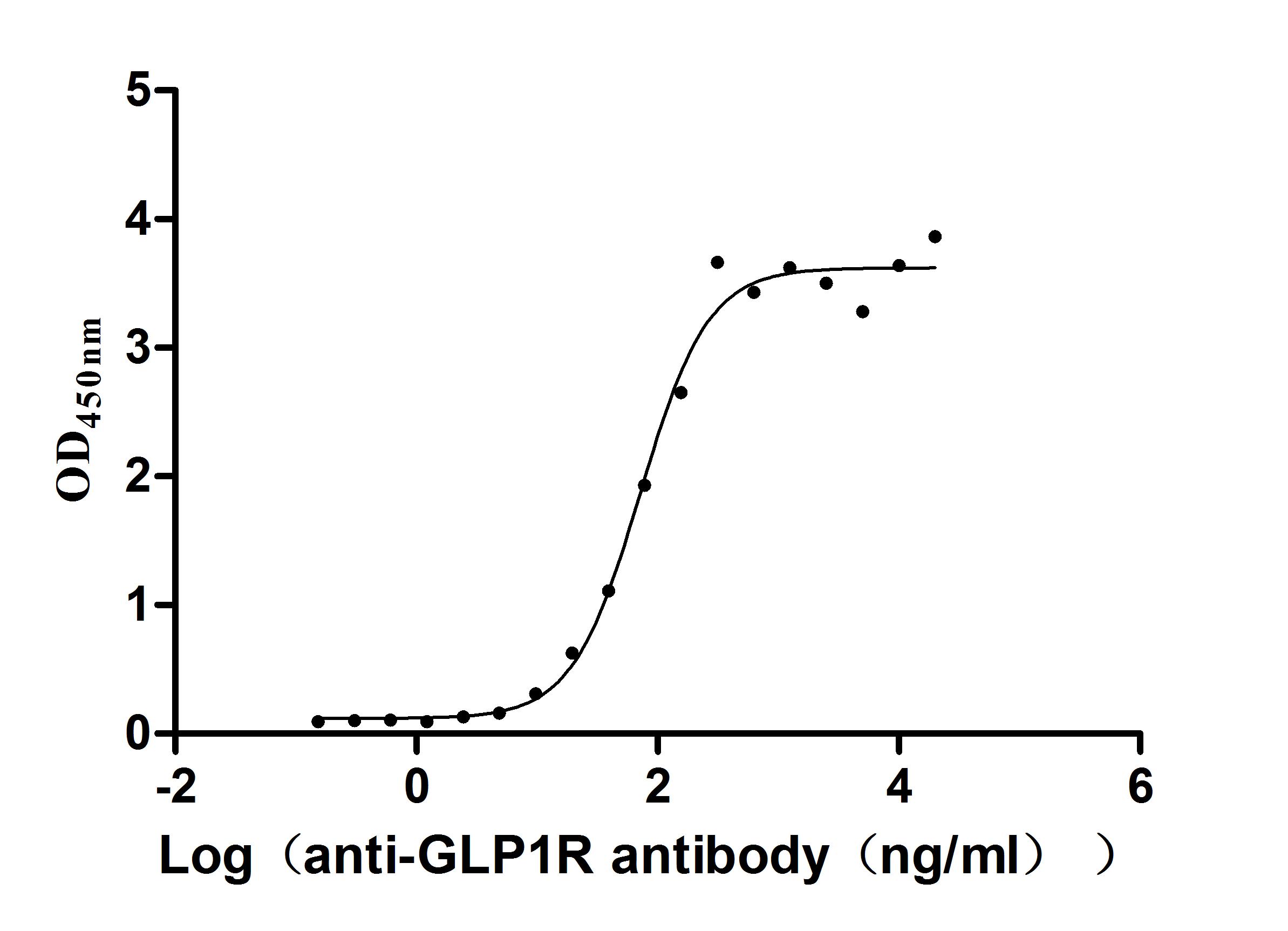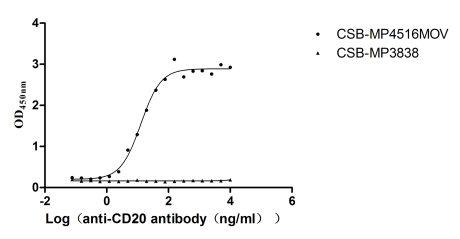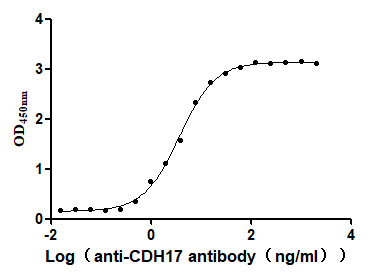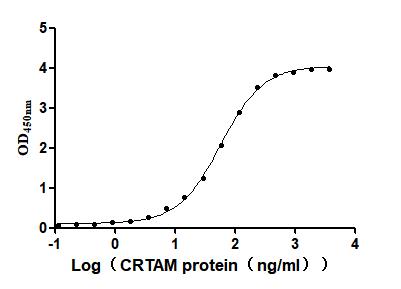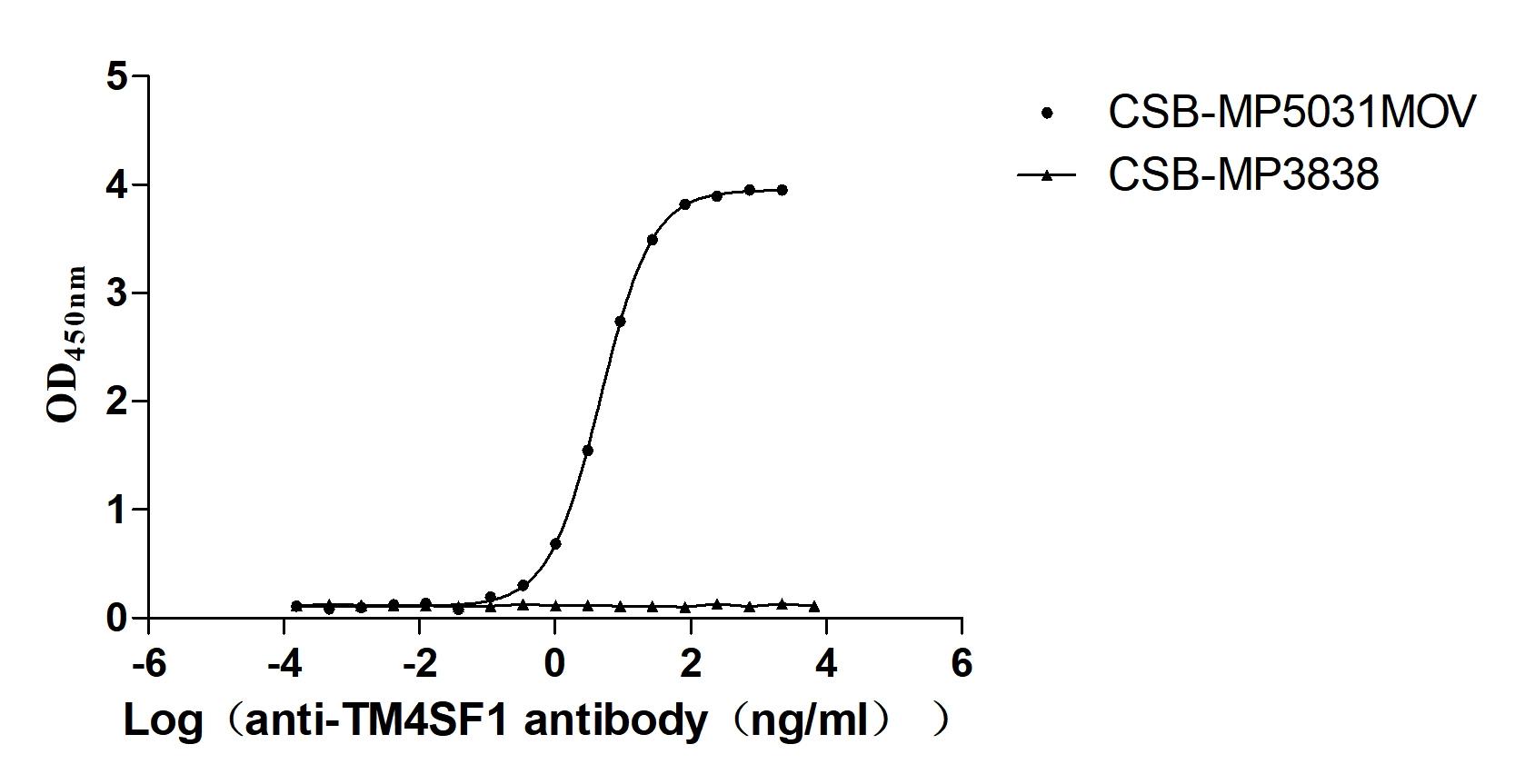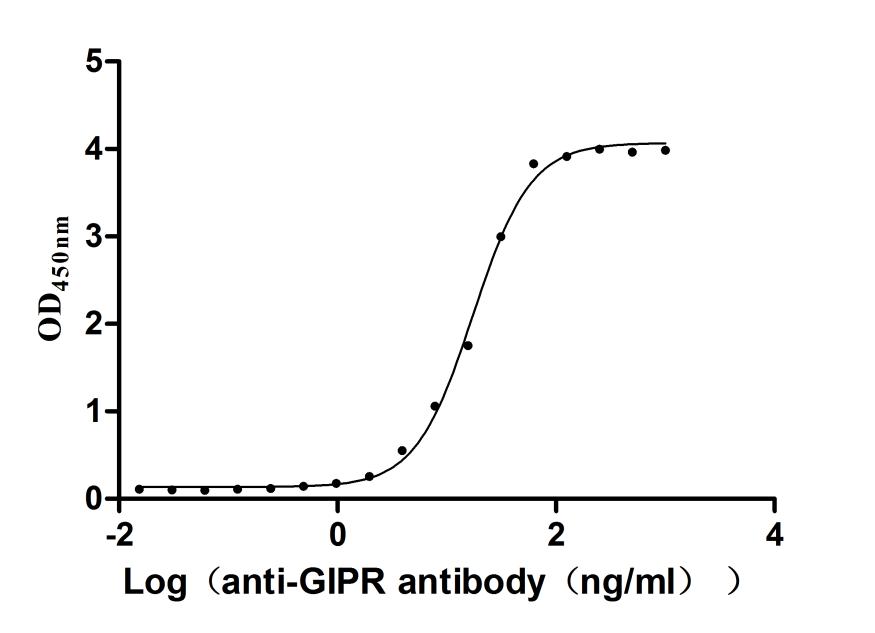Recombinant Mouse Zinc finger protein GLIS2 (Glis2)
-
中文名称:小鼠Glis2重组蛋白
-
货号:CSB-YP823747MO
-
规格:
-
来源:Yeast
-
其他:
-
中文名称:小鼠Glis2重组蛋白
-
货号:CSB-EP823747MO
-
规格:
-
来源:E.coli
-
其他:
-
中文名称:小鼠Glis2重组蛋白
-
货号:CSB-EP823747MO-B
-
规格:
-
来源:E.coli
-
共轭:Avi-tag Biotinylated
E. coli biotin ligase (BirA) is highly specific in covalently attaching biotin to the 15 amino acid AviTag peptide. This recombinant protein was biotinylated in vivo by AviTag-BirA technology, which method is BriA catalyzes amide linkage between the biotin and the specific lysine of the AviTag.
-
其他:
-
中文名称:小鼠Glis2重组蛋白
-
货号:CSB-BP823747MO
-
规格:
-
来源:Baculovirus
-
其他:
-
中文名称:小鼠Glis2重组蛋白
-
货号:CSB-MP823747MO
-
规格:
-
来源:Mammalian cell
-
其他:
产品详情
-
纯度:>85% (SDS-PAGE)
-
基因名:Glis2
-
Uniprot No.:
-
别名:Glis2; Gli5; NklZinc finger protein GLIS2; GLI-similar 2; Neuronal Krueppel-like protein; Zinc finger protein GLI5
-
种属:Mus musculus (Mouse)
-
蛋白长度:full length protein
-
表达区域:1-521
-
氨基酸序列MHSLDEPLDL KLSITKLRAA REKRERTLGV VRHHALHREL GLVDDSPAPG SPGSPPPGFL LNPKFPEKVD GRFSAAPLVD LSLSPPSGLD SPNGSSSLSP ECQGNGDLPP LPTAVDFQPL RYLDGVPSSF QFFLPLGSGG ALHLPASSFL PPPKDKCLSP ELPLAKQLVC RWAKCNQLFE LLQDLVDHVN DHHVKPEQDA RYCCHWEGCA RHGRGFNARY KMLIHIRTHT NEKPHRCPTC NKSFSRLENL KIHNRSHTGE KPYVCPYEGC NKRYSNSSDR FKHTRTHYVD KPYYCKMPGC HKRYTDPSSL RKHIKAHGHF VSHEQQELLQ LRPPPKPPLP TPDSGSYVSG AQIIIPNPAA LFGGPSLPGL PLPLPPGPLD LSALACGNGG GGGGGIGPGL PGSVLPLNLA KNPLLPSPFG AGGLGLPVVS LLGGSAGSKA EGEKGRGSVP ARVLGLEDHK TPLERTERSR SRPSPDGLPL LPGTVLDLST GNSAASSPEV LTPGWVVIPP GSVLLKPAVV N
-
蛋白标签:Tag type will be determined during the manufacturing process.
The tag type will be determined during production process. If you have specified tag type, please tell us and we will develop the specified tag preferentially. -
产品提供形式:Lyophilized powder
Note: We will preferentially ship the format that we have in stock, however, if you have any special requirement for the format, please remark your requirement when placing the order, we will prepare according to your demand. -
复溶:We recommend that this vial be briefly centrifuged prior to opening to bring the contents to the bottom. Please reconstitute protein in deionized sterile water to a concentration of 0.1-1.0 mg/mL.We recommend to add 5-50% of glycerol (final concentration) and aliquot for long-term storage at -20℃/-80℃. Our default final concentration of glycerol is 50%. Customers could use it as reference.
-
储存条件:Store at -20°C/-80°C upon receipt, aliquoting is necessary for mutiple use. Avoid repeated freeze-thaw cycles.
-
保质期:The shelf life is related to many factors, storage state, buffer ingredients, storage temperature and the stability of the protein itself.
Generally, the shelf life of liquid form is 6 months at -20°C/-80°C. The shelf life of lyophilized form is 12 months at -20°C/-80°C. -
货期:Delivery time may differ from different purchasing way or location, please kindly consult your local distributors for specific delivery time.Note: All of our proteins are default shipped with normal blue ice packs, if you request to ship with dry ice, please communicate with us in advance and extra fees will be charged.
-
注意事项:Repeated freezing and thawing is not recommended. Store working aliquots at 4°C for up to one week.
-
Datasheet :Please contact us to get it.
靶点详情
-
功能:Can act either as a transcriptional repressor or as a transcriptional activator, depending on the cell context. Acts as a repressor of the Hedgehog signaling pathway. Represses the Hedgehog-dependent expression of Wnt4. Necessary to maintain the differentiated epithelial phenotype in renal cells through the inhibition of SNAI1, which itself induces the epithelial-to-mesenchymal transition. Represses transcriptional activation by CTNNB1 in the Wnt signaling pathway. May act by recruiting the corepressors CTBP1 and HDAC3. May be involved in neuron differentiation.
-
基因功能参考文献:
- Kif3a is required for cell cycle regulation and the DNA damage response, whereas cell senescence is significantly enhanced in Glis2 null cells. PMID: 27181777
- Glis2 can function as a transcriptional activator and that post-translational modification within its DNA-binding domain can regulate its transcriptional activity PMID: 21127075
- Characterization of Glis2, a novel gene encoding a Gli-related, Kruppel-like transcription factor with transactivation and repressor functions PMID: 11741991
- Deficiency in Glis2 expression leads to tubular atrophy & progressive fibrosis, similar to nephronophthisis, that ultimately results in renal failure. Glis2 plays a critical role in the maintenance of normal kidney architecture and functions. PMID: 18227149
- positive regulator of neuronal differentiation PMID: 11262234
显示更多
收起更多
-
亚细胞定位:Nucleus speckle. Cytoplasm.
-
蛋白家族:GLI C2H2-type zinc-finger protein family
-
组织特异性:Expressed at high levels in kidney, and at lower levels in heart and lung.
-
数据库链接:
KEGG: mmu:83396
STRING: 10090.ENSMUSP00000014447
UniGene: Mm.134072
Most popular with customers
-
Recombinant Human Tumor necrosis factor receptor superfamily member 11B (TNFRSF11B) (Active)
Express system: Mammalian cell
Species: Homo sapiens (Human)
-
Recombinant Rat Microtubule-associated protein tau (Mapt) (Active)
Express system: Mammalian cell
Species: Rattus norvegicus (Rat)
-
Recombinant Human Glucagon-like peptide 1 receptor (GLP1R), partial (Active)
Express system: Mammalian cell
Species: Homo sapiens (Human)
-
Recombinant Macaca fascicularis Membrane spanning 4-domains A1 (MS4A1)-VLPs (Active)
Express system: Mammalian cell
Species: Macaca fascicularis (Crab-eating macaque) (Cynomolgus monkey)
-
Recombinant Human Cadherin-17 (CDH17), partial (Active)
Express system: Mammalian cell
Species: Homo sapiens (Human)
-
Recombinant Mouse Cytotoxic and regulatory T-cell molecule (Crtam), partial (Active)
Express system: Mammalian cell
Species: Mus musculus (Mouse)
-
Recombinant Macaca fascicularis Transmembrane 4 L6 family member 1 (TM4SF1)-VLPs (Active)
Express system: Mammalian cell
Species: Macaca fascicularis (Crab-eating macaque) (Cynomolgus monkey)
-
Recombinant Human Gastric inhibitory polypeptide receptor(GIPR),partial (Active)
Express system: Mammalian cell
Species: Homo sapiens (Human)


